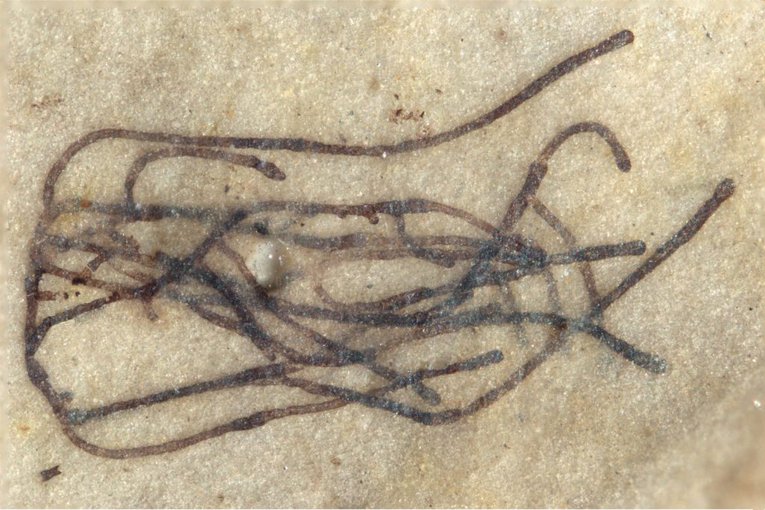
April 8, 2020
Research Highlight
Rewriting the History of Green Algae
Proterozoic chlorophyte fossils show macroscopic size, multicellularity, and cellular differentiation

Microscopic image of a fossil of Proterocladus antiquus dating from one billion years ago. The fossil is roughly 2 millimeters in length.Image credit: Virginia Tech.
Researchers supported in part by the NASA Astrobiology Program have reported the discovery of fossils that alter our understanding of chlorophyte evolution on Earth. Chlorophytes, commonly referred to as green algae, are thought to have dominated Earth’s oceans before eukaryotes became capable of photosynthesis in the Mesozoic (roughly 252 to 66 million years ago). Prior to the diversification of phototrophic eukaryotes, chlorophytes would have played a key role in shaping ecosystem complexity on Earth.
The evolutionary history of chlorophytes is not well studied because fossils of these organisms from the Proterozoic are difficult to find. In their recent study, researchers report the discovery of abundant fossils of a new chlorophyte species, dubbed Proterocladus antiquus. The fossils were recovered from rocks in China that date back nearly one billion years, and are the oldest fossil evidence of green algae yet known. Proterocladus antiquus shows that chlorophytes developed macroscopic size, multicellulary, and cellular differentiation much earlier than previously thought.
The study, “A one-billion-year-old multicellular chlorophyte,” was published in the journal Nature Ecology and Evolution. The work was supported by NASA Astrobiology through the Exobiology Program. This newly-revealed science is also a critical part of NASA’s work to understand the Universe, advance human exploration, and inspire the next generation. As NASA’s Artemis program moves forward with human exploration of the Moon, the search for life on other worlds remains a top priority for the agency.
A press release concerning this research is available from Virginia Tech at:
https://vtnews.vt.edu/articles/2020/02/science-billion_year_old_seaweed.html